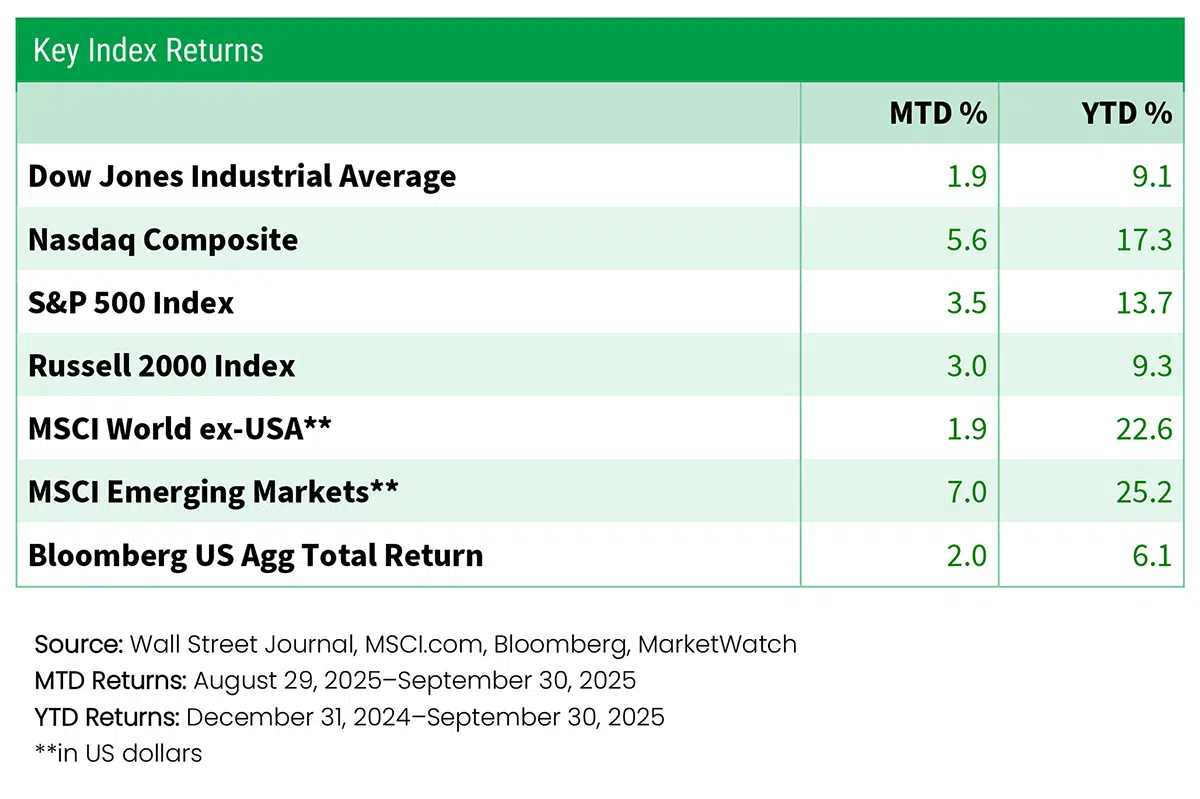
Financial Planning: Preparing for the Rising Costs of Long-Term Care
As the U.S. population continues to age, the demand for long-term healthcare is expected to rise steadily.

Author: Matthew Williams CFP®, RICP®, CEXP®, CASL®, AEP® | Director of Financial Planning at Impact Advisors Group
In October, the Federal Reserve cut its benchmark rate—the fed funds rate—by a quarter-percentage point to 4.00–4.25%. It is the first rate cut since last December.
Fed officials left the door open to one or two more rate cuts before the year is over.
The reduction in the fed funds rates surprised no one. Central bankers had telegraphed the move. So, why did the Fed cut last month?
While inflation remains somewhat elevated and is showing no signs of returning to its 2% annual target, the Fed is shifting its focus toward the soft labor market.
What is the Federal Reserve hoping to accomplish?
Well, let’s briefly touch on macroeconomic theory to help connect the dots between lower interest rates and faster economic growth.
As a wise person once told me, “Economics is common sense made difficult.”
In theory, a rate cut by the Federal Reserve lowers the cost of borrowing. If it’s cheaper to borrow and monthly payments are lower, consumers and businesses are more likely to borrow and spend.
Notably, almost 70% of all economic activity is fueled by consumer spending, according to data from the U.S. Bureau of Economic Analysis.
Encourage spending, and you will support economic activity, offsetting any headwinds incurred by lower interest rates on money markets and CDs, according to economic theory.
As the economy picks up, companies ramp up hiring to meet growing demand, leading to rising employment.
All else equal, falling interest rates that are accompanied by an expanding economy have historically been favorable for stocks.
Without delving into a complex explanation about discounted cash flows, a drop in interest rates makes it less advantageous to hold cash, and that cash may find its way into stocks.
If, however, the economy falters, a drop in corporate profits has historically outweighed any tailwind from rate cuts.
Since 1984, the Fed has cut rates 28 different times when the S&P 500 was within 3% of an all-time high, according to LPL Research.
During the 21 times when a recession was avoided (rate cuts occurring at least six months prior to a recession), the S&P 500 advanced, on average, by 18% after one year.
When a recession coincided with or closely followed a rate cut (seven instances), the S&P 500 posted an average 12-month decline of 2.7%, a stark contrast to the gains experienced when downturns were avoided.
Of course, this is simply a guide. Past performance is no guarantee of future results. But the historical data suggests the outlook is positive if a recession is avoided.
As we’ve emphasized before, focus on what you can control.
Interest rates, the economy, and market swings are beyond our reach. Your investment strategy is not.
A well-crafted investment plan isn’t rigid. It’s a flexible blueprint that can be adjusted as life changes. It’s designed to guide you from where you are today to your financial destination.
As your goals and life circumstances evolve, your plan should adapt accordingly.

One last remark: The U.S. government shut down on October 1 due to Congress’ failure to pass the necessary funding bills for the new fiscal year. Social Security payments are unaffected.
A government shutdown generates plenty of political theater, but its economic bite tends to be limited, and with it the impact on the stock market. Historically, markets have largely shrugged off shutdowns, as they rarely cause significant disruptions to the broader economy.
I trust you have found this review informative and helpful. If you have any questions or concerns or would simply like to have a conversation, please don’t hesitate to reach out to me or any member of our team.
Thank you for choosing us as your financial advisor. We are truly honored by your trust and remain committed to serving you with integrity and care.

As the U.S. population continues to age, the demand for long-term healthcare is expected to rise steadily.

Alternative investments are evolving fast. Discover how IAG’s partnership with KraneShares enhances portfolios with strategic, evidence-based diversification.

As we gather with loved ones this Thanksgiving, it’s a perfect moment to reflect on gratitude, generosity, and the IMPACT we can make.

Get the full financial picture. Discover why long-term planning requires looking beyond the obvious and stress-testing your strategy.